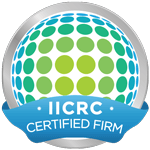Mold is much more than a nuisance, and finding it in your house is no small matter. The truth is that any type of home can fall prey to mold, whether it is caused by a leak or flood water entering the home.
It is vital to get rid of mold because it can actually be dangerous to contend with. While some mold is easily removed with household products, an infestation of dangerous mold cannot be. And when it isn't removed, mold can exacerbate health conditions and in some cases can lead to fatal conditions. This is why pinpointing mold early is essential.
Are you curious about home remediation? Are you wondering if home remediation is right for your situation? This guide will walk you through the process so that you can make a smart decision for your home.
Professionals Identify Mold
Identifying mold accurately may require professional assistance, and removing and remediating it certainly will. Professionals understand the variety of molds out there in addition to preferred removal methods.
The first step in the process of removing and remediating mold is to identify it. While mildew is the most common type of mold, you won't see much structural damage caused by it. Rot is more often associated with other types of mold.
In some cases, the professionals may ask for air samples, but they are not always required if the mold is visible. This kind of testing is typically only required if you need evidence of mold for a legal case or medical exploration.
Professionals Prepare the Home for Remediation
The mold removal company will take several steps to prepare the house for mold remediation, beginning with laying plastic shooting and connecting necessary hoses. It is also during this time that the professionals will suit up in heavy-duty gear to protect them from hazardous, toxic mold.
During this process, professionals also remove any potential water-damaged materials that have become infested with mold. This might include carpeting, rugs, furniture or other items. Mold can grow back quickly if these damp areas are not taken care of.
Professionals May Spray the Area with Biocide
Biocide is often used to kill mold. It is EPA-approved, unlike bleach, and it kills mold spores quickly. Some companies also use anti-fungal agents.
Professionals May Use Vacuuming and Blasting Techniques
In some cases, companies use wet vacuuming to pick up mold. It is an EPA-approved method for mold removal, so it is often preferred against other methods. Unlike blasting with dry ice, this method does not potentially distribute mold into the air. Still, dry ice blasting is beneficial for removing wood from areas with cement.
A HEPA vacuum is also used to remove mold. This method is only used when the contaminated areas have been removed and the area has dried. This method is beneficial because it does not release particles of mold and debris into the air.
Professionals May Spray the Area with Encapsulant
Encapsulants are typically administered on the second day of the remediation process. Encapsulation uses a variety of pain to kill any potential spores that remain but also prevents mold from growing again in the future.
Finding Professionals to Remediate Mold
Mold remediation costs vary from home to home and are based on the location of the mold and square footage of the area. It will also be dependent on the potential for structural damage inside the home.
Do you have a preferred method of mold removal and remediation? Do you have questions about the process? ANR Restoration Inc is well-versed in handling mold and will be able to answer your questions about handling issues just like these.


